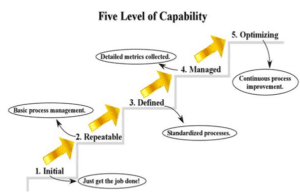In recent years, artificial intelligence (AI) and machine learning (ML) have gained immense popularity and are expanding their horizons rapidly. It is said that technologies driven by ML and AI are yet to show their true potential. Hence, companies from every sector are adopting AI and ML and trying to integrate various powerful technologies. This is why, the future of artificial intelligence and machine learning is quite promising.
One of the subfields of artificial intelligence and machine learning is supervised learning. To learn and understand more about this sub-area, one can get enrolled in online artificial intelligence and machine learning course. This will help to create a vivid understanding of supervised learning. Subsequently, an individual can commence a successful and lucrative career in supervised learning.
What do you mean by supervised learning?

Supervised learning is one of the promptly growing sub-arenas of artificial intelligence and machine learning. This branch deals with issues faced in the real world. It also has the potential to solve these problems. Notably, problems like the segregation of spam mail and messages can be easily done with the help of this amusing technology. Supervised learning consists of various datasets and algorithms that can predict the results automatically.
If an individual is willing to commence a career in supervised learning, then he/she must have detailed knowledge about it. For this, one can opt for online supervised learning training. This will help you to bag lucrative job offers.
How does supervised learning function?
Supervised learning acts on the training set. This dataset trains a model for the desired output which is later yielded by the model. A training dataset mainly consists of various inputs and correct outputs. This procedure assists the machine or model to comprehend real-life problems over sufficient time. The training dataset adjusts all the errors until it is minimised and accurate.
Supervised learning segregates problem detection into two distinct categories. And, they are:
Classification
Classification can assign tested data to accurate categories with the assistance of an algorithm. It traces, defines, and labels different data entries within the dataset of the model. The few most commonly used classification algorithms are k-nearest neighbour, linear classifiers, decision trees, random forests, and support vector machines (SVM). These algorithms are user-friendly and easy to use.
Regression
Regression is used to comprehend the link between dependent and independent variables. It is usually used to create projections or statistics. Some of the most used regression algorithms are logistical regression, linear regression, and polynomial regression.
What are the various algorithms of supervised learning?
Supervised learning has various types of algorithms. And, these have been precisely discussed below:
K-nearest Neighbour
KKN is also known as k-nearest neighbour. This segregates data points with the help of proximity to other data. This algorithm tends to assume that the same data points can be located exactly near each other. So, it calculates the distance between two data points with the assistance of Euclidean distance.
Random Forest
One of the most famous and flexible supervised learning algorithms is Random Forest. It can be used for classification as well as regression. Initially, it obtains all the unrelated decision trees and unifies them together to obtain more precise data projections
Support Vector Machine (SVM)
One of the most popular supervised learning models is Support Vector Machine (SVM). This was created by Vladimir Vapnik and can be used for regression as well as classification. This model creates a hyperplane, where distance is maximised between two classes of data points. This hyperplane is also known as the decision boundary.
Logistic Regression
Logistic regression is generally used when there is a binary or dual output like ‘yes’ and ‘no’. This regression model is built to comprehend the bond between the inputs. However, the main task of Logistic Regression is to resolve problems like spam identification.
Linear Regression
The main task of Linear Regression is to find the link between a dependent variable and independent variables. It is also responsible for foreseeing future results. There are two kinds of Linear Regression, namely Multiple Linear Regression and Simple Linear Regression. For an instance, when there is only one dependent variable and one independent variable, it is known as Simple Linear Regression. However, when there is more than one independent variable, it is referred to as Multiple Linear Regression. The method of least squares is used to plot the line of best fit for different linear regressions.
Conclusion
Imarticus Learning is offering an IIT artificial intelligence course that covers the entire portion of supervised learning. This is an online course that is led by experienced instructors. The course will open many lucrative job opportunities for those who want to commence a career in this domain. Thus, without any delay, get yourself enrolled in this online course.



